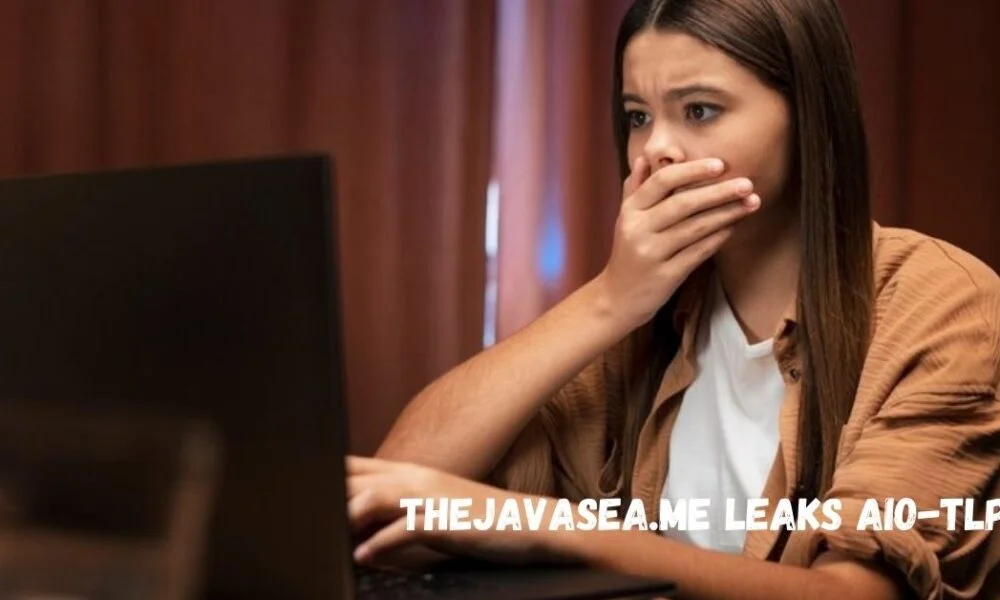In recent years, online security and privacy have become a growing concern for many users. One of the most significant threats to online security is data leaks. Websites, organizations, and individuals are constantly at risk of having sensitive information exposed to the public through unauthorized means. A topic that has been gaining attention is the Thejavasea.me leaks AIO-TLP, which has caught the interest of security experts and everyday internet users alike.
In this article, we’ll break down what Thejavasea.me leaks and AIO-TLP are, why they matter, and what steps you can take to protect yourself online.
What is Thejavasea.me?
Thejavasea.me is a website that has gained attention due to its involvement in leaking sensitive data. While the exact origins of the website may be unclear, it has been mentioned in various forums and discussions about data breaches and leaks. These types of websites are often involved in the illegal distribution of personal or corporate data, ranging from passwords and usernames to financial information.
Websites like Thejavasea.me typically collect leaked data from hacked databases or through other malicious activities. They then distribute or sell this information to other individuals, often on the dark web or through specific channels where users can access it for nefarious purposes.
What Does AIO-TLP Mean?
To understand the Thejavasea.me leaks AIO-TLP, it’s important to break down what AIO-TLP stands for. The term is commonly associated with data breaches and leaks in the context of cybersecurity.
- AIO stands for All-In-One. In the context of data leaks, AIO often refers to large data dumps or breaches where a vast amount of information is leaked all at once. This could include a combination of usernames, passwords, email addresses, financial data, and more. These types of leaks are particularly dangerous because they contain comprehensive information about many users, making it easier for malicious actors to exploit the data.
- TLP stands for Traffic Light Protocol. TLP is a system used in cybersecurity to indicate the sensitivity of shared information. It is categorized by different colors:
- TLP means the information is highly sensitive and should only be shared within a closed group of individuals.
- TLP indicates that the information is sensitive but can be shared on a need-to-know basis.
- TLP means the information can be shared within the community but not publicly.
- TLP indicates that the information can be shared freely and is public.
When AIO-TLP is mentioned, it often refers to a large, all-in-one data leak where the data’s sensitivity level might be classified according to the TLP system. In the case of Thejavasea.me leaks, it’s likely that the website has either gathered or distributed a significant amount of sensitive information that could include various levels of classified data, possibly even under TLP.
Why Are Data Leaks Dangerous?
Data leaks can have serious consequences for individuals, businesses, and organizations. Here’s why they are so dangerous:
- Identity Theft: Leaked personal information such as names, email addresses, and social security numbers can be used by hackers to steal someone’s identity. This can lead to financial losses, damaged credit scores, and other long-term problems.
- Financial Loss: If credit card details, bank account numbers, or financial information is leaked, hackers can use that data to make unauthorized purchases, transfer money, or engage in fraudulent activities.
- Reputation Damage: For businesses, a data leak can severely damage their reputation. Customers lose trust when they feel their personal information is not safe. This can result in lost business, legal action, and significant financial costs to resolve the issue.
- Unauthorized Access: Leaks that include login credentials such as usernames and passwords can allow hackers to gain unauthorized access to personal accounts, from email accounts to online banking and social media. This access can be used to further exploit individuals or steal even more data.
- Blackmail and Extortion: In some cases, leaked data may include sensitive personal or professional information that can be used for blackmail or extortion. Hackers may threaten to release the information unless the victim pays a ransom.
How Do Data Leaks Happen?
Data leaks, like those from Thejavasea.me, can happen in a variety of ways. Here are some of the most common methods hackers use to obtain and leak data:
- Hacking and Exploiting Vulnerabilities: Hackers often target websites or organizations that have weak security systems. By exploiting vulnerabilities in a website’s code or infrastructure, they can gain access to databases filled with personal information.
- Phishing Attacks: Phishing attacks are a common way for hackers to trick users into giving up sensitive information. These attacks typically involve fake emails or websites designed to look legitimate. When users enter their information, the hacker captures it.
- Insider Threats: Sometimes, data leaks happen because of employees or insiders who have access to sensitive information. These insiders might intentionally or unintentionally leak data for personal gain, revenge, or because of weak internal security policies.
- Data Breaches: When a large organization is breached, hackers may steal vast amounts of data at once. This can include customer information, financial data, or even internal business secrets. Once obtained, the data may be sold on the dark web or shared with others for malicious use.
- Poor Security Practices: Many data leaks happen because organizations fail to follow proper security protocols. Weak passwords, unencrypted data, or outdated software can all provide entry points for hackers.
Steps to Protect Yourself from Data Leaks
Given the dangers posed by data leaks like those from Thejavasea.me, it’s important to take steps to protect yourself. Here’s how you can safeguard your personal information:
1. Use Strong and Unique Passwords
One of the most effective ways to protect yourself from data leaks is to use strong, unique passwords for all of your online accounts. Avoid using the same password for multiple accounts. Use a combination of letters, numbers, and special characters, and avoid common phrases or easily guessable information like your name or birthdate.
2. Enable Two-Factor Authentication (2FA)
Two-factor authentication adds an extra layer of security to your accounts by requiring a second form of verification in addition to your password. This might be a code sent to your phone or a fingerprint scan. Even if someone gets hold of your password, they would still need the second factor to access your account.
3. Monitor Your Accounts
Regularly monitor your bank accounts, credit card statements, and online accounts for any suspicious activity. If you notice any unauthorized transactions or changes, contact your financial institution or the service provider immediately.
4. Keep Software Updated
Outdated software often contains security vulnerabilities that hackers can exploit. Make sure your operating system, browser, and any apps you use are updated regularly to protect against these vulnerabilities.
5. Use a VPN
A virtual private network (VPN) encrypts your internet connection, making it harder for hackers to intercept your data. Using a VPN is especially important when accessing public Wi-Fi networks, as these are often targets for hackers.
6. Be Cautious with Emails and Links
Be wary of emails or messages from unknown senders, especially if they ask for personal information or contain links. Phishing attacks are common, and hackers often disguise their emails to look like legitimate requests from trusted companies.
7. Check if Your Information Has Been Leaked
You can use websites like Have I Been Pwned to check if your email address or other personal information has been part of a data breach. These tools can alert you if your information has been compromised, allowing you to take action quickly.
Final Thoughts
The Thejavasea.me leaks AIO-TLP is another example of how data breaches and leaks continue to pose a serious threat to online security. Whether it’s your personal information or business data, staying informed and taking the right precautions is crucial for protecting yourself in today’s digital world.
By following best practices like using strong passwords, enabling two-factor authentication, and staying alert for suspicious activity, you can reduce the risk of falling victim to a data leak. Always remember that cybercriminals are constantly evolving their methods, so staying vigilant is the key to maintaining your security and privacy online. more blogs







